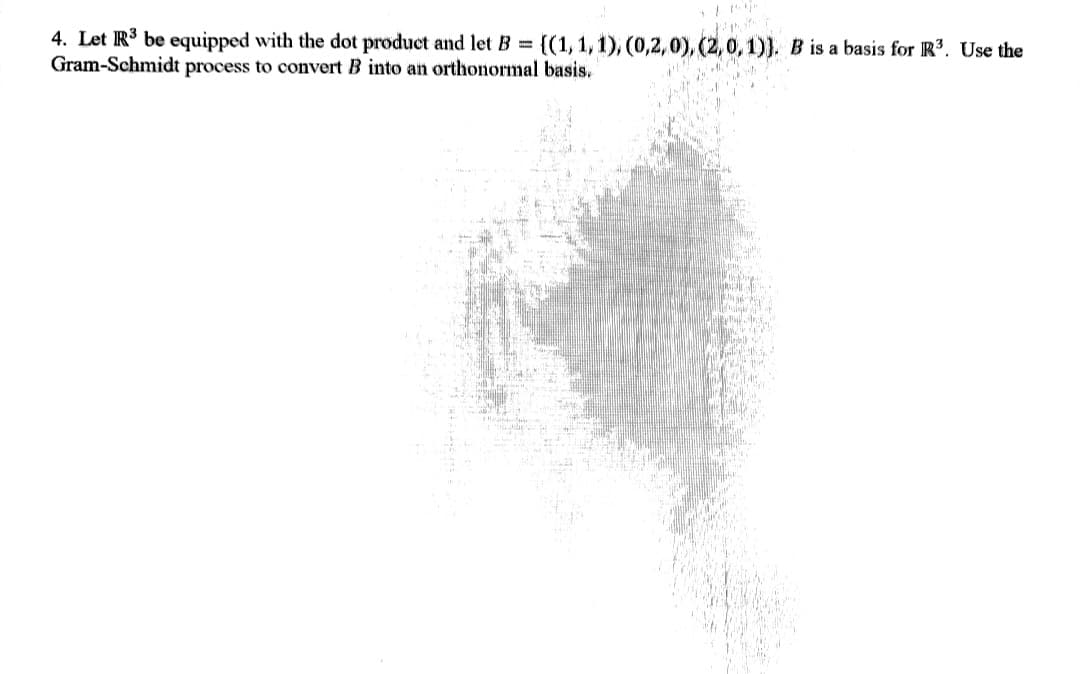4. Let R³ be equipped with the dot product and let B = {(1, 1, 1), (0,2,0), (2,0,1)). B is a basis for R³. Use the Gram-Schmidt process to convert B into an orthonormal basis.
4. Let R³ be equipped with the dot product and let B = {(1, 1, 1), (0,2,0), (2,0,1)). B is a basis for R³. Use the Gram-Schmidt process to convert B into an orthonormal basis.
Elementary Linear Algebra (MindTap Course List)
8th Edition
ISBN:9781305658004
Author:Ron Larson
Publisher:Ron Larson
Chapter5: Inner Product Spaces
Section5.3: Orthonormal Bases:gram-schmidt Process
Problem 41E: Use the inner product u,v=2u1v1+u2v2 in R2 and Gram-Schmidt orthonormalization process to transform...
Related questions
Question
100%
..Q4 please Write on paper and write the question too so I can print. Thanks a lot. Will upvote if done.

Transcribed Image Text:4. Let R³ be equipped with the dot product and let B = {(1, 1, 1), (0,2,0), (2,0,1)). B is a basis for R³. Use the
Gram-Schmidt process to convert B into an orthonormal basis.
Expert Solution
This question has been solved!
Explore an expertly crafted, step-by-step solution for a thorough understanding of key concepts.
Step by step
Solved in 3 steps with 3 images

Recommended textbooks for you

Elementary Linear Algebra (MindTap Course List)
Algebra
ISBN:
9781305658004
Author:
Ron Larson
Publisher:
Cengage Learning

Linear Algebra: A Modern Introduction
Algebra
ISBN:
9781285463247
Author:
David Poole
Publisher:
Cengage Learning

Algebra & Trigonometry with Analytic Geometry
Algebra
ISBN:
9781133382119
Author:
Swokowski
Publisher:
Cengage

Elementary Linear Algebra (MindTap Course List)
Algebra
ISBN:
9781305658004
Author:
Ron Larson
Publisher:
Cengage Learning

Linear Algebra: A Modern Introduction
Algebra
ISBN:
9781285463247
Author:
David Poole
Publisher:
Cengage Learning

Algebra & Trigonometry with Analytic Geometry
Algebra
ISBN:
9781133382119
Author:
Swokowski
Publisher:
Cengage